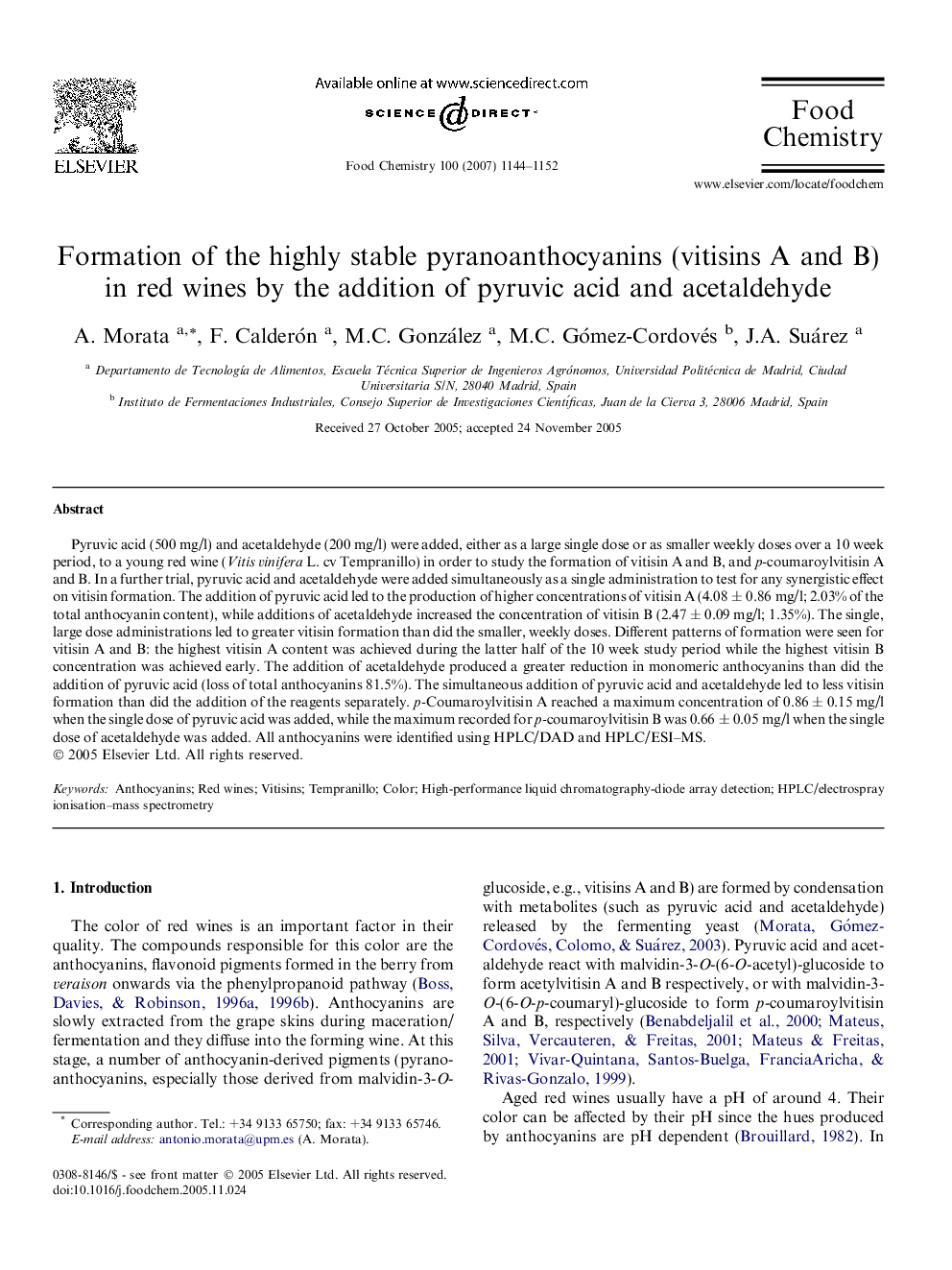| Article ID | Journal | Published Year | Pages | File Type |
|---|---|---|---|---|
| 1190903 | Food Chemistry | 2007 | 9 Pages |
Pyruvic acid (500 mg/l) and acetaldehyde (200 mg/l) were added, either as a large single dose or as smaller weekly doses over a 10 week period, to a young red wine (Vitis vinifera L. cv Tempranillo) in order to study the formation of vitisin A and B, and p-coumaroylvitisin A and B. In a further trial, pyruvic acid and acetaldehyde were added simultaneously as a single administration to test for any synergistic effect on vitisin formation. The addition of pyruvic acid led to the production of higher concentrations of vitisin A (4.08 ± 0.86 mg/l; 2.03% of the total anthocyanin content), while additions of acetaldehyde increased the concentration of vitisin B (2.47 ± 0.09 mg/l; 1.35%). The single, large dose administrations led to greater vitisin formation than did the smaller, weekly doses. Different patterns of formation were seen for vitisin A and B: the highest vitisin A content was achieved during the latter half of the 10 week study period while the highest vitisin B concentration was achieved early. The addition of acetaldehyde produced a greater reduction in monomeric anthocyanins than did the addition of pyruvic acid (loss of total anthocyanins 81.5%). The simultaneous addition of pyruvic acid and acetaldehyde led to less vitisin formation than did the addition of the reagents separately. p-Coumaroylvitisin A reached a maximum concentration of 0.86 ± 0.15 mg/l when the single dose of pyruvic acid was added, while the maximum recorded for p-coumaroylvitisin B was 0.66 ± 0.05 mg/l when the single dose of acetaldehyde was added. All anthocyanins were identified using HPLC/DAD and HPLC/ESI–MS.
